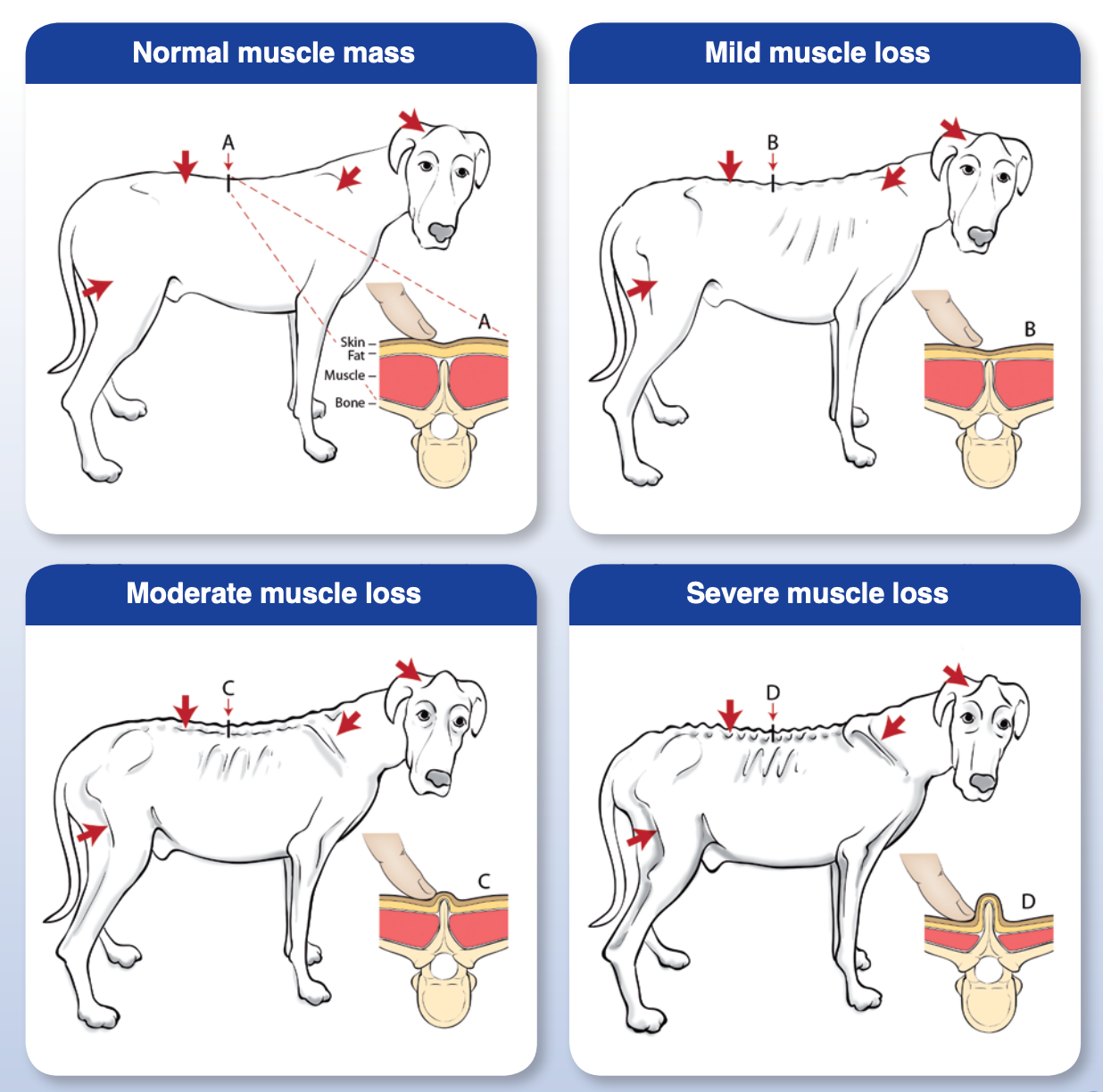Body & Muscle Condition Scoring
Initial assessment of body condition can be performed during the general observational examination. Use gentle pressure to palpate areas over the ribs and dorsal spinous processes, to define abdominal tuck and waist, and to determine if excess fat deposits exist around the shoulders and base of tail. The following videos demonstrate these techniques in a dog and a cat, and both demonstrations are referring to the score out of 9:
Body Condition Scoring Video (Cat)
Body Condition Scoring Video (Dog)
Body condition scoring guides can be found on the WSAVA website:
Muscle Condition Scoring
Muscle condition is a subjective assessment and the score is graded as normal, or if muscle loss is noted it is graded as mild, moderate, or severe. Muscle loss can be present even if BSC is normal.
Muscle condition is inspected visually and by palpating the patients. Palpation over body prominences can be helpful in identifying muscle loss (if the bones are more prominent than usual).
A helpful place to palpate is over the epaxial muscles (the muscles to either side of the thoracic or lumbar vertebrae), one of the earliest sites to show muscle loss
The image below is from the World Small Animal Veterinary Association and further information in muscle conditioning can be found on their site:

The following video shows Dr. Lisa Freeman, from Tufts University, explain the Muscle Condition Score as part of the overall nutritional assessment and introduces the terms cachexia and sarcopenia:
For more information, check out the WSAVA Global Nutritional Guidelines and Toolkit.

